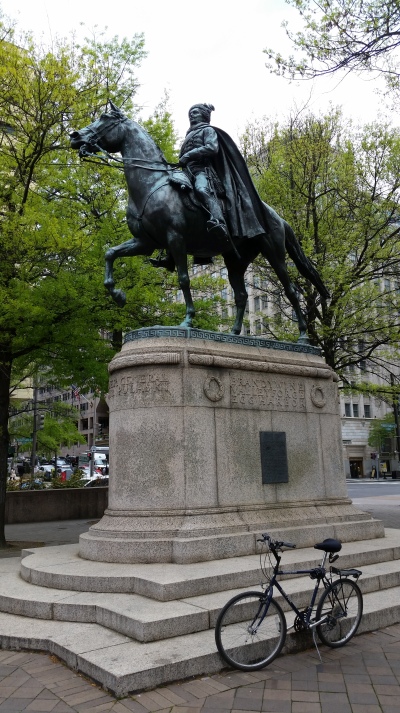While I was sitting in my office working this morning I received a message from our security personnel advising all employees to use caution if exiting the building around 1:00pm because many of the streets in the Downtown area would be shut down by the police for a large group of people. However, the message simply urged caution. It contained no specific information or explanation of what was going to be happening. So naturally I was curious enough to schedule today’s lunchtime bike ride for the same time so I could go out and see first hand what was going on.
It turned out to be the Iran Freedom March, an annual protest in which Iranian-Americans march down Pennsylvania Avenue, from 10th Street to Freedom Plaza, where members and supporters of the Organization of Iranian American Communities gather for speeches and to draw attention to their call for a regime change in Tehran and ask the U.S. They then finish by marching the last couple of blocks to The White House, where they call on the U.S. government to label Iran’s military and intelligence agency as terror organizations. The group seeks an uprising in Iran and regime change to establish a democratic, secular and non-nuclear nation.
Among other speakers, Maryan Rajavi, president-elect of the opposition National Council of Resistance of Iran, addressed the marchers. In prepared remarks, she noted that the rally was held on International Women’s Day and congratulated women fighting for equality under a “misogynist regime.” She stated, “On this day, Iran and Iranians take pride in the women of Iran who have risen up and waged one of the greatest resistances of the modern era. They have given tens of thousands of martyrs, prisoners and torture victims, and for four decades have been active on all the fields of battle.” Rajavi then called on the U.S. State Department to designate Iran’s military, the Islamic Revolutionary Guard Corps, and the Ministry of Intelligence as foreign terrorist organizations, asserting “Doing so would be a positive message to the Iranian people, and a decisive message against the clerical regime.”
It wasn’t the way I planned to spend my lunchtime today. But those plans can wait until next week. I’m glad I was able to observe the march, and learn more about their cause.
[Click on the photos to view the full-size versions]





























































